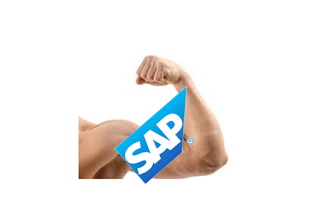On January 24, 2017 SAP released its results
of their fiscal year 2016 – and the fourth quarter thereof.
In a nutshell SAP:
·
Delivered to its increased 2020
guidance
·
Had an increase of 31 per cent
in cloud subscription and support revenue, while still being able to increase
the software license and support revenue.
Cloud revenue increased especially in Q4 and promises to stay at a high
level with a very healthy backlog
·
Increased its full year
operating profit by 20 per cent to 5.12 Billion Euro (IFRS)
·
Has a strong backlog of cloud
bookings
This success has a slightly negative effect
on the company profitability while it negotiates the shift from license revenue
to subscription revenue while being in an investment mode. It, however, seems
to be driven by an increasing adoption of S/4HANA, a strong increase of the
Hybris set of CEC solutions, including e-commerce and increasing traction in
the HCM space. So it is broad.
Based upon the strong delivery of 2016 SAP
expects the cloud business to increase by up to 34 per cent in 2017 (all
numbers of course at constant currencies) and increases its guidance of revenue
and profit for 2017. In line with this the company is also bullish in its mid
term outlook to 2020, which it increases, too.
My Take
Of course the big increase in revenues,
expressed as a percentage, is partly owed to the fairly low number. In
comparison Salesforce reported 2.14 Billion dollar for their third quarter
alone, as opposed to 2.99 Billion Euro for SAP’s fiscal year. Oracle reported
798 million dollars in their FY Q1 report, so should be roughly on par with
SAP. Unluckily it is hard to compare Microsoft numbers as they mix their cloud
and business software numbers differently and they did not give numbers other
than a 13 per cent increase for the Dynamics range of products.
Still it seems that SAP has finally found a
strategy that the company is able to express convincingly and execute upon. I
think the below diagram taken from the release slides shows it pretty
succinctly.
Based upon a strong platform – the SAP
Cloud Platform – SAP helps its customers to use insights to fuel transactions
to gain more insight. Customer experience is only one piece of this picture,
which correlates with my observations over the past 15 or so years. It also
correlates with what then board member to be Bernd Leukert told the attendants
of the Wispubs SAP CRM event in Orlando: “SAP is a Supply Chain Company”. Very
much to the dismay of the attending CRM people, I must say.
The focus of SAP clearly lies within the
company and its supply chain.
Add security, and industry orientation then
one sees a company that is all about business processes and their effective and
efficient execution. Published APIs are key for a thriving ecosystem, machine
learning and blockchain represent technologies that open further avenues down
the road.
Sensors and the (Industrial) Internet of
things are playing a major role here. SAP acknowledges and embraces this with
its massive investment into what has become Leonardo.
There is a notable topic absent on this
diagram.
Artificial Intelligence.
This is a strong statement, as I cannot
imagine that this is by accident.
It is also straightforward. For SAP the
intelligence lies within the applications. What is important is the input – loads
of data – and the ability to provide and deliver models that can be trained to
support specific business processes – machine learning.
In any case this absence turns the minds
away from a hyped technology to being outcome driven. AI is a means to an end.
Simple as that.
Friend Paul Greenberg recently searched
for Optimus Prime. I think SAP now has established itself as a very strong
contender – although I would still be very wary of Microsoft. The company shows
a vision for its customers that embraces the whole value chain, with a focus on
internal processes and the supply chain, but not neglecting customer facing
processes.
Combining the technologies that it created
(and acquired) over the past three to five years to business applications that
enable a real time ‘control’ and intelligent forecasting abilities, combined
with efficiency gains is a very compelling vision for business leaders.
I am looking forward to observing SAP in
the coming years.


Comments
Post a Comment